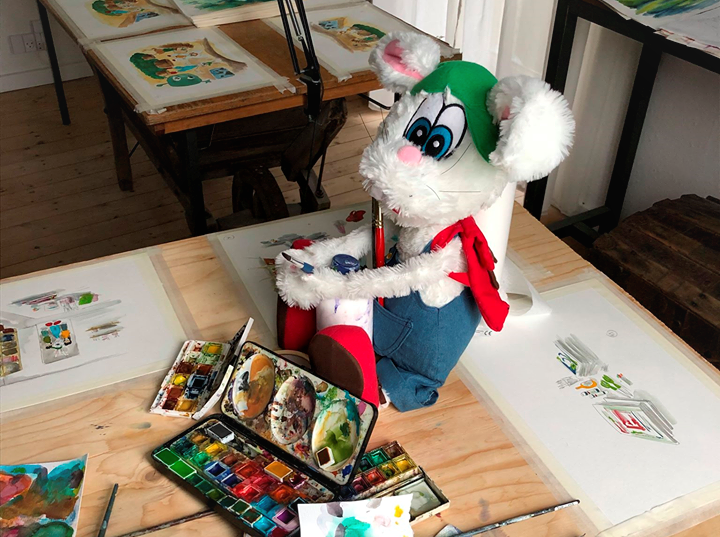There are many steps along the way from the initial idea to a finished Milton story. Every story has its own, individual creation process, but some common features are repeated each time.
1. The idea is shaped
It all starts with an idea and a desire to tell a story. The idea for the Milton stories originally started because author Marianne wanted to inspire children to become more interested in the family trips and to participate more actively in the planning. Since then the Milton project has evolved to primarily include SDG stories for school students. The stories involve the youngest students in the Sustainable Development Goals and how we can all contribute to solving the world’s greatest challenges. Regardless of what the story is about, a lot of research is necessary to make sure the stories are credible and factual.
All writes work differently, but in the idea phase, places and characters are often brainstormed and so are the challenges that Milton and the readers have to learn about. The world is shaped and developed. It is a very long and creative process. Finally, the story has to be written – with full speed ahead day and night!
Since Milton Around the World has embarked on the SDG journey, each of the goals function as a sort of guideline for the stories. But sometimes it can be an extra challenge to create a captivating and educational story within a certain framework, rather than having the freedom to use one’s imagination.
2. The illustrations are created
When the story itself is finished and the text is written, it’s time to create the illustrations. In this phase, illustrator Lykke works very closely with Marianne to ensure that the most central actions in the story are illustrated and the right expressions and surroundings are drawn. First, Lykke draws a sketch of the various illustrations, and when these have been approved and adapted, she paints the illustrations with water colors. It’s a comprehensive and time consuming work to create illustrations for books that are sometimes more than 50 pages long.
3. The illustrations are digitized and adapted
Before the water color illustrations can be included in a book, the must be digitized. This is done by the photographer, Nils, who photographs each individual illustration with a high resolution camera of 50 million pixels. The individual illustrations are then post processed to make sure they have the same light and color expression.
4. The story is set up graphically
Now we have some text and some illustrations. However, it’s still a long way before we have a finished book in our hands or on the screen. Text and illustrations must be combined in the proper graphic expression. This is where our graphic designer, Vibeke, enters the process. She combines text and illustrations on the individual pages and essentially creates the book form with the right colors and formats. When her part is done, the story is ready for print.
5. The story is produced
Now, the process is slightly divided, depending on whether it’s an SDG story or a travel story. The travel stories are mainly for print and become physical books.
The SDG stories go through a slightly different process as they, besides being printed, are released online for schools to use. Rikke, who is a teacher and owner of Play with IT, produces the books in a program called Book Creator. Not only does she set up the books digitally, she also adds a variety of assignments as well as teacher guides. The books are then published on Skoletube, which is an online teaching platform most schools in Denmark use. When Rikke has finished her work, the books are ready for use by all curious students and teachers.
Many more people are involved in the creation of a Milton story, e.g. reviewers, educators and professionals who help tailor the story to the target audience, and researchers who confirm the context of the various SDG topics. All of them contribute to complete the stories that can now delight and inspire the youngest readers and their parents and teachers.


